“Yoga is the journey of the self, through the self, to the self.” – Bhagavad Gita
Introduction
Yoga, in its most profound essence, is not just a physical practice but a journey of the soul. While many of us are familiar with the physical benefits of yoga postures, there is a deeper, spiritual layer to each asana that can transform the way we perceive our connection to the universe. But what if we told you that understanding the spiritual significance of yoga postures could elevate your practice and life in as little as 30 minutes a day?
Have you ever wondered why each yoga pose has its unique name or why certain asanas resonate with specific emotions or intentions? The meaning of yoga postures goes beyond the physical stretch and strength they require; they are deeply connected to our mind, body, and spirit. Through daily practice, we can unlock a higher state of being, find balance, and even experience moments of clarity.
Uncover the spiritual significance of yoga postures, exploring how they connect us to our inner selves and the world around us. Whether you’re a beginner or an experienced yogi, by dedicating just 30 minutes daily, you can become an expert in understanding these powerful postures and gain deeper insight into their spiritual meaning.
What Are Yoga Postures?
Yoga postures, also known as yoga asanas, are the physical forms that make up the yoga practice. These poses are designed to align the body, calm the mind, and awaken the spirit. The meaning of yoga postures goes far beyond just moving our bodies; they serve as a gateway to a deeper understanding of ourselves.
Each posture carries a symbolic meaning. Whether it’s the grounded stability of Tadasana (Mountain Pose) or the surrender of Savasana (Corpse Pose), each yoga pose offers a unique path to spiritual insight. In essence, yoga postures are an embodiment of self-awareness, control, and inner peace.
Read also: 8 Ancient Meditation Mudras That Erase Negativity & Elevate Focus
The Spiritual Connection Behind Yoga Postures
The spiritual significance of yoga postures comes from ancient yogic philosophies and practices that link each asana to higher consciousness. These postures are not just movements; they are a form of meditation that unites the body and mind.
For example, Padmasana (Lotus Pose) is a seated posture that symbolizes the lotus flower’s ability to rise above murky waters. It signifies spiritual growth, enlightenment, and purification. Bhujangasana (Cobra Pose) opens the chest and heart, allowing energy to flow freely, symbolizing strength and vitality.
Categories of Yoga Postures and Their Spiritual Significance
Yoga postures, or asanas, are categorized into several types based on their form and function. Each type serves a unique purpose, benefiting different aspects of the body, mind, and spirit. Let’s explore the key categories of yoga postures and their significance.
1. Standing Poses (e.g., Mountain Pose, Warrior Pose)
Common Standing Poses and Their Meanings
Standing poses are the foundation of many yoga practices. They connect us to the earth, encourage stability, and promote strength. The meaning of standing poses often revolves around grounding, strength, and building confidence. For instance:
- Mountain Pose (Tadasana): This simple yet powerful pose embodies stability and grounding. It helps you connect with the earth, promoting a sense of centeredness and balance.
- Warrior Pose (Virabhadrasana): This dynamic pose symbolizes power, courage, and determination. It is named after the warrior Virabhadra, created from a powerful and fierce energy. Practicing Warrior Pose cultivates a sense of fearlessness and strength.
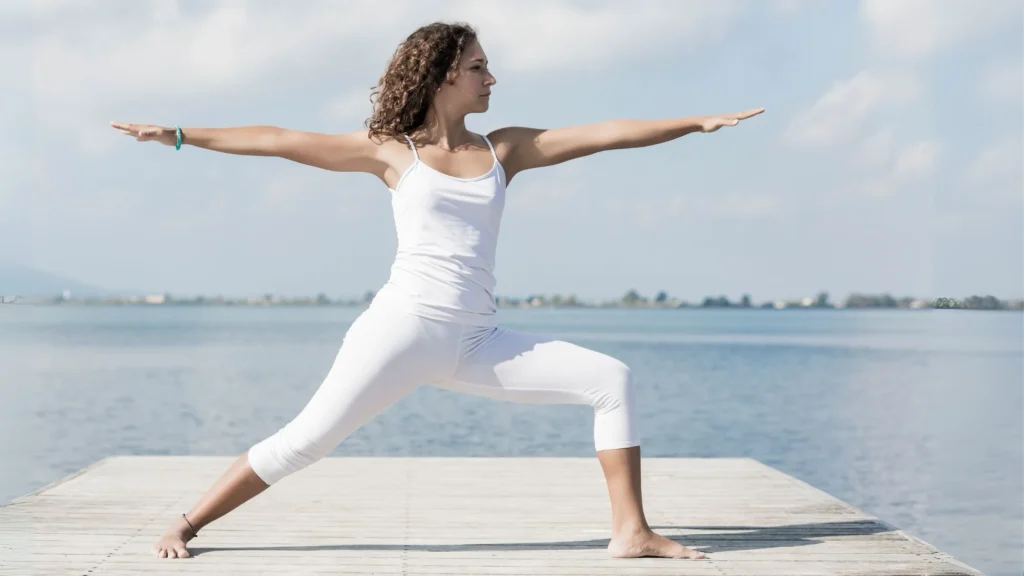
Physical and Mental Benefits
- Balance and Stability: Standing postures require engaging your legs and core, helping you develop physical balance. Mountain Pose, for instance, fosters alignment and steadiness in the body.
- Strength and Endurance: Warrior Pose builds muscle strength, particularly in the legs and core, as it involves holding the pose with strength and focus.
- Focus and Grounding: By holding these poses, you cultivate mental focus and clarity. They encourage mindfulness and a sense of inner steadiness, helping to release distractions.
Read also: 8 Simple Yet Powerful Habits for Boosting Mental Toughness
2. Seated Poses (e.g., Lotus Pose, Staff Pose)
Purpose of Seated Poses in Meditation and Flexibility
Seated poses are primarily designed to encourage meditation and stillness, promoting flexibility in the lower body and fostering inner calm. These postures help facilitate deep, mindful breathing and are often used as preparation for meditation.
- Lotus Pose (Padmasana): This pose is known for its spiritual significance, often used in meditation. It symbolizes purity and enlightenment. Practicing Lotus Pose helps you deepen your connection to yourself and the universe.
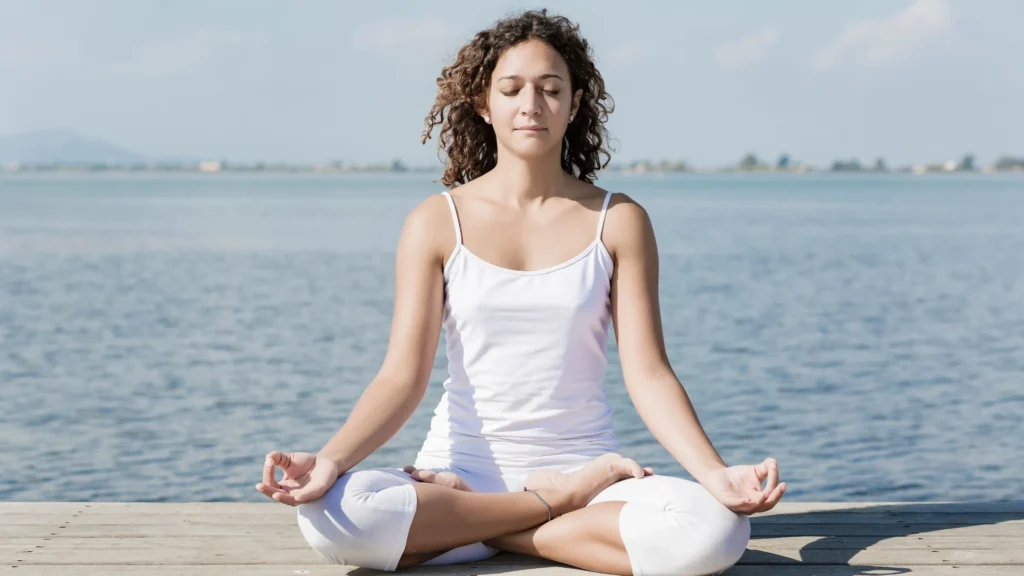
- Staff Pose (Dandasana): This seated posture emphasizes lengthening the spine and creating alignment. It promotes awareness and mindfulness, helping you focus your energy inward.
Benefits
- Flexibility and Stretching: Seated poses, especially those that involve deep stretches, help release tightness in the hips, hamstrings, and lower back.
- Improved Digestion: Certain seated poses, such as Staff Pose, can promote better digestion by creating space in the abdomen and improving posture.
- Mindfulness and Calm: These poses encourage a peaceful, centered state of mind. They help foster mental clarity and focus, making them ideal for meditation or simply calming the mind.
3. Balancing Poses (e.g., Tree Pose, Eagle Pose)
Significance of Balance in Yoga
Balancing poses challengesto both physical and mental stability. They require a focused mind and strong body awareness, helping you improve concentration and build confidence.
- Tree Pose (Vrksasana): Tree Pose is an iconic balancing posture. It symbolizes growth, strength, and rootedness. In this pose, you focus on grounding one foot while lifting the other leg and bringing the hands into the prayer position. It promotes stability and mental clarity.
- Eagle Pose (Garudasana): This pose involves balancing on one leg while wrapping the arms and legs. It symbolizes strength, grace, and focus. It also encourages you to stay grounded while embracing the challenge of being off-balance.

Mental and Physical Benefits
- Concentration and Focus: These poses require undivided attention. Balancing postures engage the core and legs, helping to develop concentration and body awareness.
- Coordination and Confidence: By practicing balancing poses regularly, you can improve coordination and posture. The challenge of maintaining balance also boosts self-confidence.
- Core Strength: Many balancing postures engage the core muscles, helping to strengthen your abdominal muscles, improve posture, and increase stability.
Read also: 8 Surprising Mistakes to Avoid in Body Scan Meditation Practice
4. Backbends (e.g., Cobra Pose, Wheel Pose)
Emotional and Physical Benefits of Backbends
Backbends are some of the most expansive postures in yoga. These poses open the heart and chest, physically and emotionally. They help release emotional tension, alleviate stress, and promote energy flow.
- Cobra Pose (Bhujangasana): Cobra Pose is often practiced as part of a sequence that opens the chest and stretches the spine. It symbolizes strength, resilience, and flexibility, while also opening the heart to foster emotional release.
- Wheel Pose (Urdhva Dhanurasana): This advanced backbend requires strength, flexibility, and stamina. It opens the chest, shoulders, and hips, helping to release tension and foster a sense of freedom.
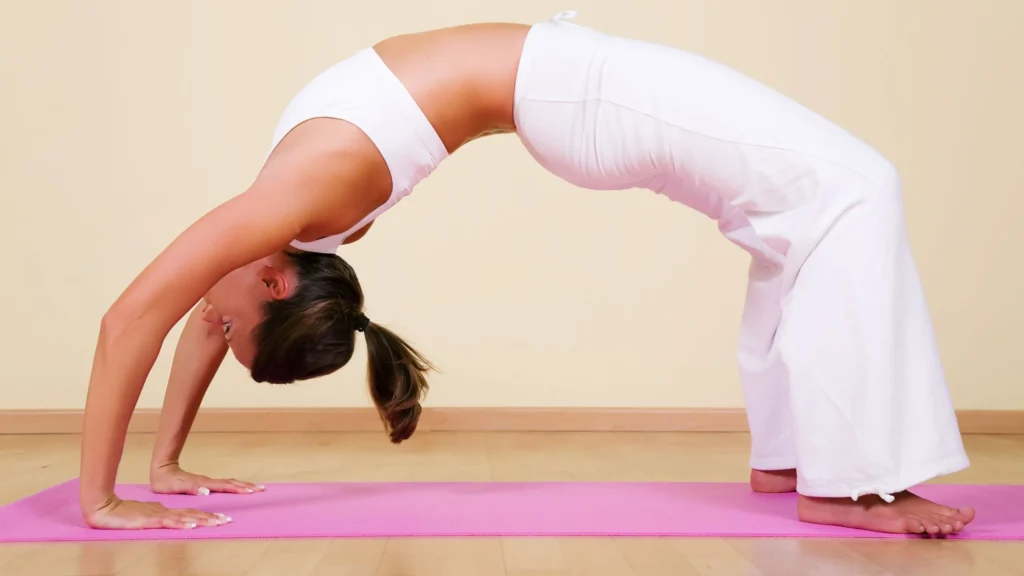
Physical and Emotional Benefits
- Opens the Heart: Backbends open the chest, promoting emotional release and relieving tension in the heart area. They create space for emotional expression and help release negative emotions.
- Increases Energy: These postures energize the body and mind. By stretching and expanding the chest, backbends increase circulation and awaken the nervous system.
- Improves Posture: By improving the flexibility of the spine and opening the chest, backbends help correct posture issues and encourage a more confident, upright stance.
5. Inversions (e.g., Headstand, Shoulder Stand)
Importance of Inversions
Inversions, where the heart is higher than the head, are some of the most powerful postures in yoga. These postures challenge our perception and energy flow by reversing the usual relationship between the body and gravity.
- Headstand (Sirsasana): Often called the “king of all poses,” the Headstand builds upper body strength and increases blood flow to the brain, enhancing mental clarity and focus.
- Shoulder Stand (Sarvangasana): Known as the “queen of asanas,” this inversion is beneficial for stimulating the thyroid and improving circulation, especially to the upper body and head.

Read also: 10 Daily Habits for a Blissful Mind and Stress-Free Life
Benefits of Inversions
- Increases Blood Flow: Inversions help reverse blood flow, stimulating the circulatory system and providing a fresh supply of oxygen to the brain. This can lead to enhanced clarity and focus.
- Boosts Energy and Mental Clarity: By inverting the body, inversions stimulate the mind and increase alertness. They also help refresh the body and mind, reducing fatigue.
- Improves Posture: By strengthening the shoulders and spine, inversions help correct misalignments and improve overall posture.
6. Relaxation Poses (e.g., Child’s Pose, Corpse Pose)
Significance of Relaxation Poses
Relaxation poses are essential for cooling down and allowing the body and mind to rest after vigorous practice. These poses help to restore energy and bring the body into a state of calm.
- Child’s Pose (Balasana): This restorative pose involves sitting on your heels and bending forward, bringing your forehead to the ground. It symbolizes surrender and quietude, offering deep relaxation and comfort.
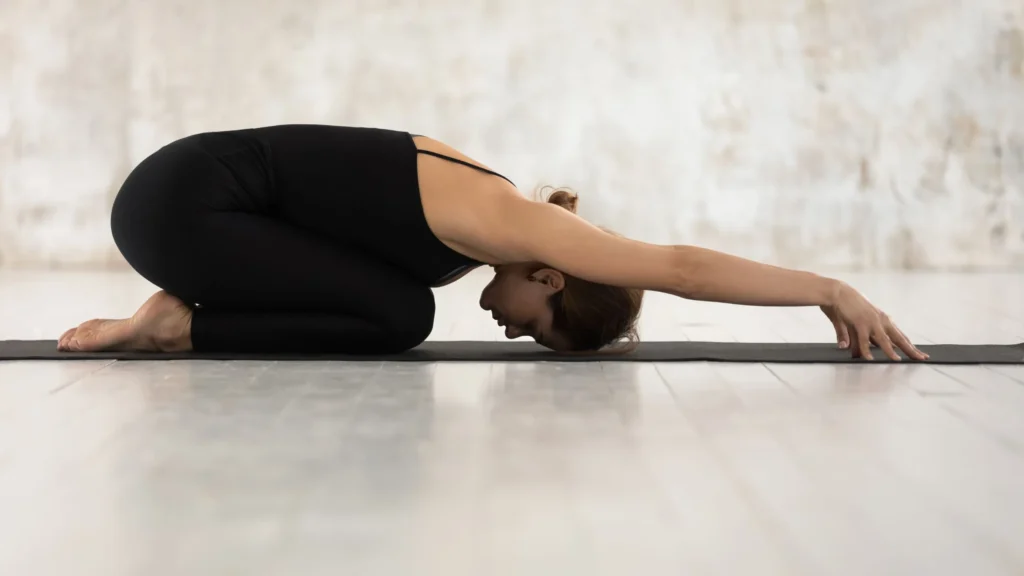
- Corpse Pose (Savasana): Often practiced at the end of a yoga session, Corpse Pose helps to integrate the benefits of the practice. It involves lying on your back, with your body fully relaxed and is a time for total stillness.
Benefits of Relaxation Poses
- Stress Relief: These poses help to calm the nervous system, promoting deep relaxation and releasing accumulated stress.
- Deep Breathing: Relaxation poses encourage slow, deep breaths, which activate the parasympathetic nervous system, helping to reduce anxiety and tension.
- Restoration and Healing: These poses offer time for the body to restore and heal, promoting emotional and physical well-being after the intensity of other postures.
Read also: 6 Surprising Ways Self-Care Therapy Heals Negativity
The Meaning Behind the Most Popular Yoga Postures
Each yoga posture carries a deeper, symbolic meaning that reflects the balance between body, mind, and spirit. These meanings not only enhance the physical benefits but also connect us to ancient yogic philosophies. Let’s explore the significance behind some of the most popular yoga postures.
1. Tadasana (Mountain Pose)
Symbolizes Grounding, Stability, and the Foundation of All Poses
Tadasana, or Mountain Pose, may seem like a simple standing posture, but it holds immense significance. It represents the firm foundation from which all other yoga postures arise. Standing tall, with feet firmly planted and arms extended, Mountain Pose embodies grounding and balance. It serves as the base of alignment, helping to develop awareness of posture, symmetry, and balance.
Spiritual Meaning
Symbolically, Mountain Pose connects us to the earth, reinforcing the idea that we must remain grounded to stand tall in life. It represents strength and stability, reminding us to stand firm in our convictions and maintain balance, both physically and mentally.

Physical and Mental Benefits
- Builds strength in the legs, core, and back.
- Promotes proper posture and alignment.
- Fosters mental clarity and focus by grounding the body.
Read also: Why Nature is Essential for Mental Peace: 10 Science-Backed Benefits
2. Uttanasana (Forward Fold)
Represents Surrender, Letting Go, and Humility
Uttanasana, or Forward Fold, is a deeply restorative and humbling pose. When we fold forward, the head and heart bow toward the earth, symbolizing surrender, letting go of ego, and embracing humility. This posture encourages a release of tension and attachment, inviting us to let go of whatever we’re holding onto, physically or emotionally.
Spiritual Meaning
The act of folding forward represents surrendering to the present moment, letting go of the need for control, and opening ourselves up to receive inner peace and wisdom. It is a reminder that growth often comes through releasing what no longer serves us.

Physical and Mental Benefits
- Stretches the hamstrings, spine, and calves.
- Relieves stress and calms the mind.
- Improves flexibility and aids in digestion.
Read also: 6 Effective Stress-Relief Techniques for Lasting Peace
3. Adho Mukha Svanasana (Downward Dog)
A Pose for Energy Flow, Stretching, and Rejuvenation
Adho Mukha Svanasana, or Downward Dog, is one of the most recognizable yoga poses. This pose is a full-body stretch that reawakens the body by elongating the spine, shoulders, and legs. It also encourages the flow of energy throughout the body.
Spiritual Meaning
Downward Dog represents rejuvenation and renewal. It symbolizes the flow of energy and vitality that moves through our bodies. The pose asks us to turn inward and focus on our breath, connecting to the energy of the earth as we ground ourselves with our hands and feet.

Physical and Mental Benefits
- Stretches the hamstrings, calves, and spine.
- Strengthens the arms, shoulders, and core.
- Increases energy and improves circulation.
- Calms the nervous system and reduces stress.
Read also: 6 Unexpected Roles of Meditation in Finding Inner Peace: A Path to Tranquility
4. Bhujangasana (Cobra Pose)
Symbolizes Strength and Resilience, Opening the Heart
Bhujangasana, or Cobra Pose, involves lifting the chest and head off the ground while keeping the lower body grounded. This pose symbolizes the cobra rising from the earth, representing strength, resilience, and the awakening of energy.
Spiritual Meaning
Cobra Pose opens the heart and chest, symbolizing emotional vulnerability and the release of negativity. It encourages the practitioner to embrace their inner power and resilience. Just as a cobra rises up, we, too, are encouraged to rise above challenges with strength and grace.
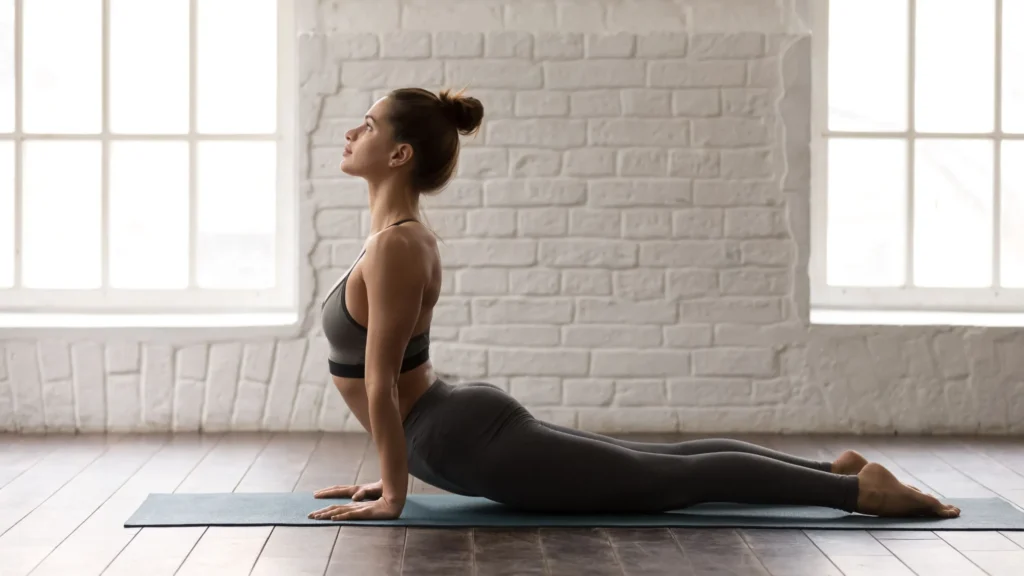
Physical and Mental Benefits
- Strengthens the spine, arms, and shoulders.
- Opens the chest and lungs, improving breathing.
- Improves flexibility in the back and promotes better posture.
- Boosts energy levels and enhances focus.
Read also: 5 Quick and Effective Breathing Techniques to Reduce Stress Instantly
5. Sirsasana (Headstand)
Known as the “King of Asanas,” Symbolizing Balance and Mental Clarity
Sirsasana, or Headstand, is often referred to as the “king of asanas” because of its numerous physical and mental benefits. This inversion poses a challenge to both the body and mind, requiring focus and balance.
Spiritual Meaning
The headstand symbolizes a shift in perspective, turning the world upside down. It represents the balance between body and mind, cultivating mental clarity and insight. It invites practitioners to overcome their fears and embrace a new point of view.
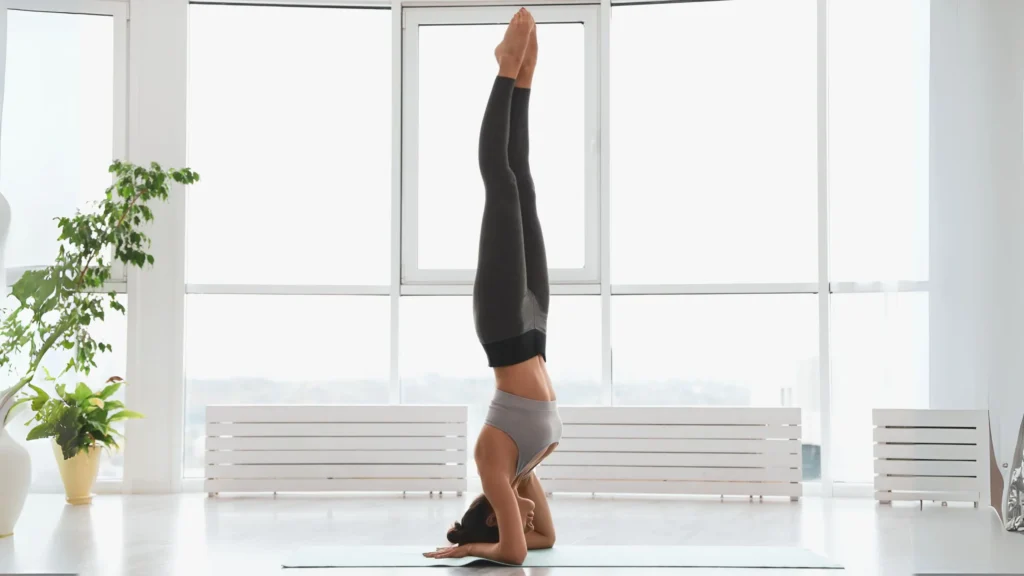
Physical and Mental Benefits
- Strengthens the arms, shoulders, and core.
- Improves circulation and blood flow to the brain.
- Increases mental clarity and focus.
- Enhances balance and strengthens the spine.
6. Savasana (Corpse Pose)
Represents Surrender and Complete Relaxation, Bringing About Mental Peace
Savasana, or Corpse Pose, is often practiced at the end of a yoga session. It involves lying flat on your back with arms and legs extended, completely relaxed. Despite appearing passive, this pose is an essential part of the practice.
Spiritual Meaning
Corpse Pose represents surrender and acceptance, allowing the body to release all tension and find peace. It encourages letting go of all mental and physical strain, facilitating deep relaxation. It’s an invitation to reconnect with yourself on a profound level.

Physical and Mental Benefits
- Promotes deep relaxation and stress relief.
- Calms the nervous system and reduces anxiety.
- Restores energy and rejuvenates the body.
- Helps integrate the benefits of the entire practice.
Read also: 10 Signs Your Subconscious Mind Is Trying to Tell You Something: Don’t Ignore
Benefits of Yoga Postures
Physical Benefits
Yoga postures offer a wide range of physical benefits. From increasing flexibility and strength to improving posture and circulation, each asana works on different parts of the body. Standing poses build muscle strength, while seated and restorative poses help with flexibility and relaxation.
Mental and Emotional Benefits
Yoga is not just about the body; it’s also about the mind. Practicing yoga postures daily can reduce stress, improve concentration, and foster a sense of inner calm. The meaning of yoga postures becomes apparent as we experience a deep sense of balance and harmony in our lives. Each pose connects us to the present moment and helps alleviate anxiety and depression.
Spiritual Benefits
On a spiritual level, yoga postures help us cultivate mindfulness, awareness, and a connection to the higher self. They guide us toward inner peace, allowing us to experience a deeper connection to ourselves and the universe.
Related: 6 Underrated Benefits of Mindful Yoga to Achieve a Stress-Free Living
Become an Expert in Yoga Postures in Just 30 Minutes a Day
Becoming an expert in yoga postures doesn’t require hours of practice every day. By dedicating just 30 minutes each day, you can begin to understand the spiritual significance of each pose and improve your technique. Here’s how:
- Focus on Proper Alignment
Ensure that you are practicing each pose with correct alignment. This will maximize the physical benefits and allow you to tap into the deeper spiritual energy of each posture. - Start Slow, Build Consistency
Begin with a few basic poses and gradually work your way up to more complex asanas. The key is consistency. Practice every day, even if it’s only for 30 minutes. - Integrate Breathwork
Breath control, or Pranayama, is an essential part of yoga. By synchronizing your breath with each posture, you deepen your practice and open yourself to the full spiritual benefits of yoga. - Meditate During Your Practice
Take a few moments during each yoga session to meditate and connect with your inner self. Use this time to focus on the meaning behind each pose and the energy it invokes.
Read also: Astonishing Benefits of Aromatherapy and Yoga Practice in 20 Minutes
Conclusion
Yoga postures are much more than physical exercises; they are spiritual practices that connect the body, mind, and spirit. Through daily practice, even just 30 minutes a day, we can begin to understand the deeper meaning of each asana and unlock its full potential. Whether it’s the strength and stability found in standing poses or the peace and surrender offered by restorative poses, every yoga posture has a purpose that extends beyond the physical. By embracing the spiritual significance of yoga postures, we move closer to inner peace and a deeper connection to ourselves and the world around us.
Key Takeaways
- Each yoga posture has a unique spiritual significance.
- Practicing yoga daily for just 30 minutes can bring profound benefits to your body, mind, and spirit.
- Consistency, alignment, and breath control are key to deepening your yoga practice.
FAQs
1. What is the spiritual meaning of yoga postures?
Yoga postures symbolize various aspects of spiritual growth, including strength, flexibility, balance, and inner peace.
2. How long should I practice yoga to see the benefits?
Practicing yoga for just 30 minutes a day can yield both physical and mental benefits over time.
3. Can yoga postures improve my mental health?
Yes, regular practice can reduce stress, improve focus, and promote emotional well-being.
4. What are the best yoga postures for beginners?
Start with simple poses like Tadasana, Downward Dog, and Child’s Pose to build strength and flexibility.
5. Why are breathing techniques important in yoga?
Breathing techniques, or Pranayama, help regulate energy flow and enhance the spiritual and physical benefits of yoga postures.






